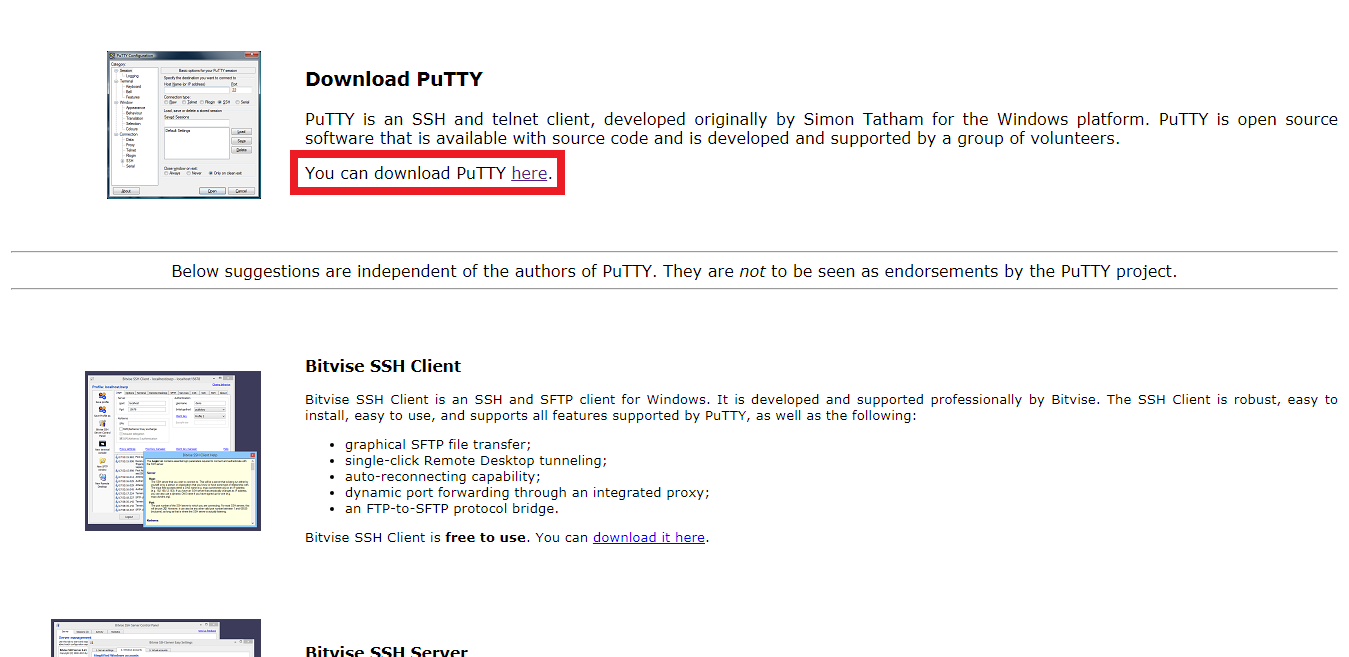

Add your public key to your DigitalOcean account to be able to embed it in new Droplets on creation. Now that you have your generated key pair saved on your computer and ready to use, you can: The public key is redisplayed again in the appropriate format. This software, when used with the PuTTY telnet/ssh client and the WinSCP SCP/FTP client, allows you to authenticate to Kerberos, open Kerberized connections to remote machines, and encrypt your data transmissions. #HOW TO USE PUTTY SSH ON WINDOWS HOW TO#
Navigate to the private key in your file system and select it. Scenario/Use case: This article provides instructions on how to install and configure the Kerberos software on your Windows system. Next to Load an existing private key file, click the Load button. If you need to see the public key in the right format after the private key has been saved: You can click the Save public key as well, but take note: The format PuTTYGen uses when it saves the public key is incompatible with the OpenSSH authorized_keys files used for SSH key authentication on Linux servers. However, there are numbers of other free SSH clients available online those ones can be used too. The Putty is a free and easy way to login Ubuntu and other Linux servers remotely from Windows using SSH. 
To connect or log in the Ubuntu via SSH, we need an SSH client for Windows. We strongly recommend using a passphrase, but you can press ENTER to bypass this prompt. Step 4: Download the Putty on Windows 10/9/7. If you have not entered a passphrase, you will be asked to confirm that you want to save the key without one. You can name your key whatever you’d like, and the extension. Note to Unix users: this manual currently primarily documents the Windows versions of the PuTTY utilities. This manual documents PuTTY, and its companion utilities PSCP, PSFTP, Plink, Pageant and PuTTYgen.

When you’re done, click the Save private key button and select a secure location to keep it. How to Use PuTTY on Windows - SSH PuTTY User Manual PuTTY is a free (MIT-licensed) Windows Telnet and SSH client.







 0 kommentar(er)
0 kommentar(er)
